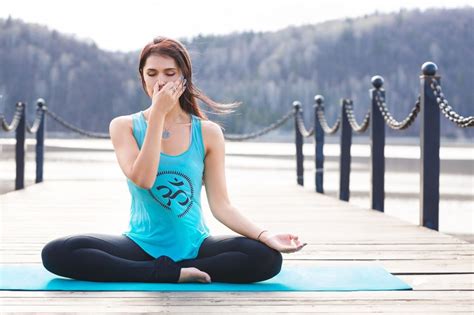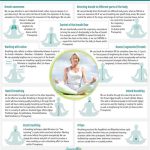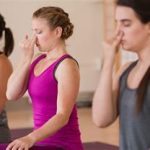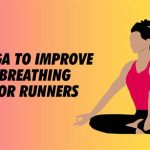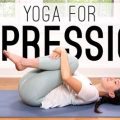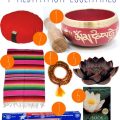Master Essential Yoga Breathing Techniques for Mind, Body, and Spirit
Yoga breathing, also known as pranayama, is a critical component of yoga practice, yet it often goes underappreciated compared to the more physically demanding postures. In this comprehensive guide, we’ll explore various breathing techniques that form the cornerstone of pranayama, helping you unlock the full benefits of yoga—both physically and mentally. By mastering these vital breathing skills, you can enhance your flexibility, improve your mental clarity, and even deepen your connection to the present moment.
Key Concepts of Yoga Breathing (Pranayama)
Understanding the key concepts behind pranayama is crucial before diving into specific techniques. At its core, pranayama is about regulating the breath to control the life force or prana that flows within us.
- Prana: Refers to the vital life energy present in all living beings.
- Apana: The downward-moving energy responsible for elimination and grounding.
- Inhalation (Puraka): Drawing in prana to energize the body.
- Exhalation (Rechaka): Releasing toxins, both physical and emotional, through the breath.
- Retention (Kumbhaka): Holding the breath momentarily to balance prana and apana.
Historical Context of Pranayama
Pranayama has its roots in ancient Vedic texts, where it was originally seen as a way to purify the mind and body. Over time, this practice became an essential part of the larger yogic philosophy, evolving through texts like the Upanishads and the Bhagavad Gita. Today, pranayama is a standard part of yoga practices worldwide, often taught alongside asanas (physical postures) to form a complete practice for holistic health.
Current State of Yoga Breathing Practices
In the modern era, yoga breathing techniques have been adapted for a variety of purposes beyond traditional practice. These include stress management, anxiety reduction, and even improving athletic performance. However, the wide variety of teachings available can sometimes lead to confusion. Here, we aim to clear up that confusion by focusing on the most effective and research-supported pranayama techniques.
Current Popular Techniques
- Ujjayi Breath: Often called “ocean breath,” Ujjayi is commonly used during asana practice to maintain focus and energy.
- Kapalabhati: A forceful, cleansing breath that helps detoxify the lungs and invigorate the mind.
- Nadi Shodhana: Also known as alternate nostril breathing, this technique balances the two hemispheres of the brain, promoting calmness and concentration.
Practical Applications of Pranayama
Yoga breathing techniques have broad applications that extend far beyond the yoga mat. Here’s how you can integrate these practices into your daily life:
- Stress Management: Use Nadi Shodhana for calming the mind and balancing emotional responses in high-pressure situations.
- Improved Sleep: Engage in deep, slow diaphragmatic breathing (Ujjayi) before bed to quiet the nervous system.
- Athletic Performance: Incorporate Kapalabhati to build stamina and increase lung capacity during cardio workouts.
Case Studies of Pranayama Benefits
| Technique | Application | Result |
|---|---|---|
| Nadi Shodhana | Anxiety management | Reduction in cortisol levels and improved focus |
| Ujjayi | Enhanced meditation practice | Deeper mindfulness and emotional regulation |
| Kapalabhati | Weight loss support | Increased metabolic rate, aiding fat loss |
| Bhramari | Chronic migraine relief | Reduction in migraine frequency and intensity |
Stakeholder Analysis
Pranayama’s benefits reach multiple groups of people, each with specific needs and goals. Here’s a breakdown of key stakeholders and how they can benefit from mastering yoga breathing techniques:
- Beginners: Can use simple techniques like Ujjayi to quickly learn the basics of breath control.
- Athletes: Will benefit from Kapalabhati, increasing lung capacity and endurance.
- Corporate Professionals: Nadi Shodhana can help manage stress in high-stakes environments, improving productivity.
- Elderly Individuals: Pranayama can improve cardiovascular health and lower stress, promoting longevity.
Implementation Guidelines for Mastering Yoga Breathing
To effectively incorporate pranayama into your practice or daily routine, follow these guidelines:
- Start Slow: Begin with simpler techniques like diaphragmatic breathing before moving on to advanced practices like Bhastrika (bellows breath).
- Consistency is Key: Practice daily, even if just for a few minutes, to build proficiency.
- Seek Guidance: Attend classes or work with a qualified instructor to ensure proper technique.
- Mindful Breathing: Incorporate pranayama into everyday activities, like walking or reading, to make the practice habitual.
Ethical Considerations
While pranayama offers many benefits, there are ethical considerations, particularly concerning accessibility and the potential for cultural appropriation. Some feel that the widespread commercialization of yoga in the West strips it of its deeper spiritual roots. When practicing or teaching pranayama, it’s essential to honor its traditional origins while making it accessible to a global audience.
Limitations and Future Research
Though pranayama has been widely practiced for millennia, there is still much to learn about its full benefits and limitations. Many studies have shown its potential to improve mental health, but more controlled, long-term studies are needed to better understand its effects on physical health, particularly in relation to cardiovascular disease and chronic illnesses. Future research could also focus on understanding how to personalize pranayama techniques for different populations, such as those with respiratory conditions or anxiety disorders.
Expert Commentary
The growing body of evidence supporting pranayama’s positive impact on both mental and physical health suggests that it should be considered a vital component of any holistic health routine. Experts from the fields of sports science, psychology, and traditional yoga philosophy all agree on the importance of breath control as a foundation for overall well-being. By integrating these practices into our daily lives, we can not only improve our personal health but also contribute to a more balanced and mindful society.
